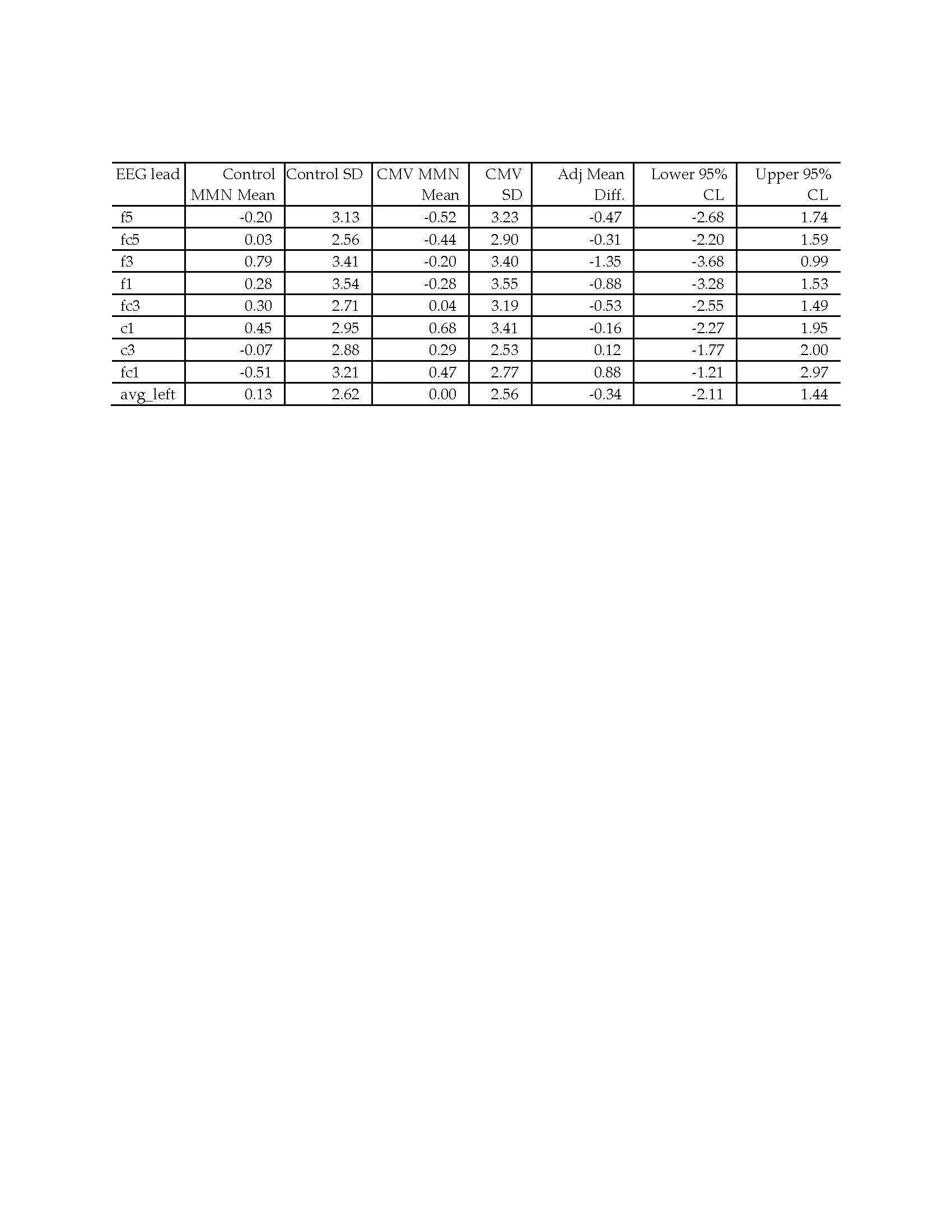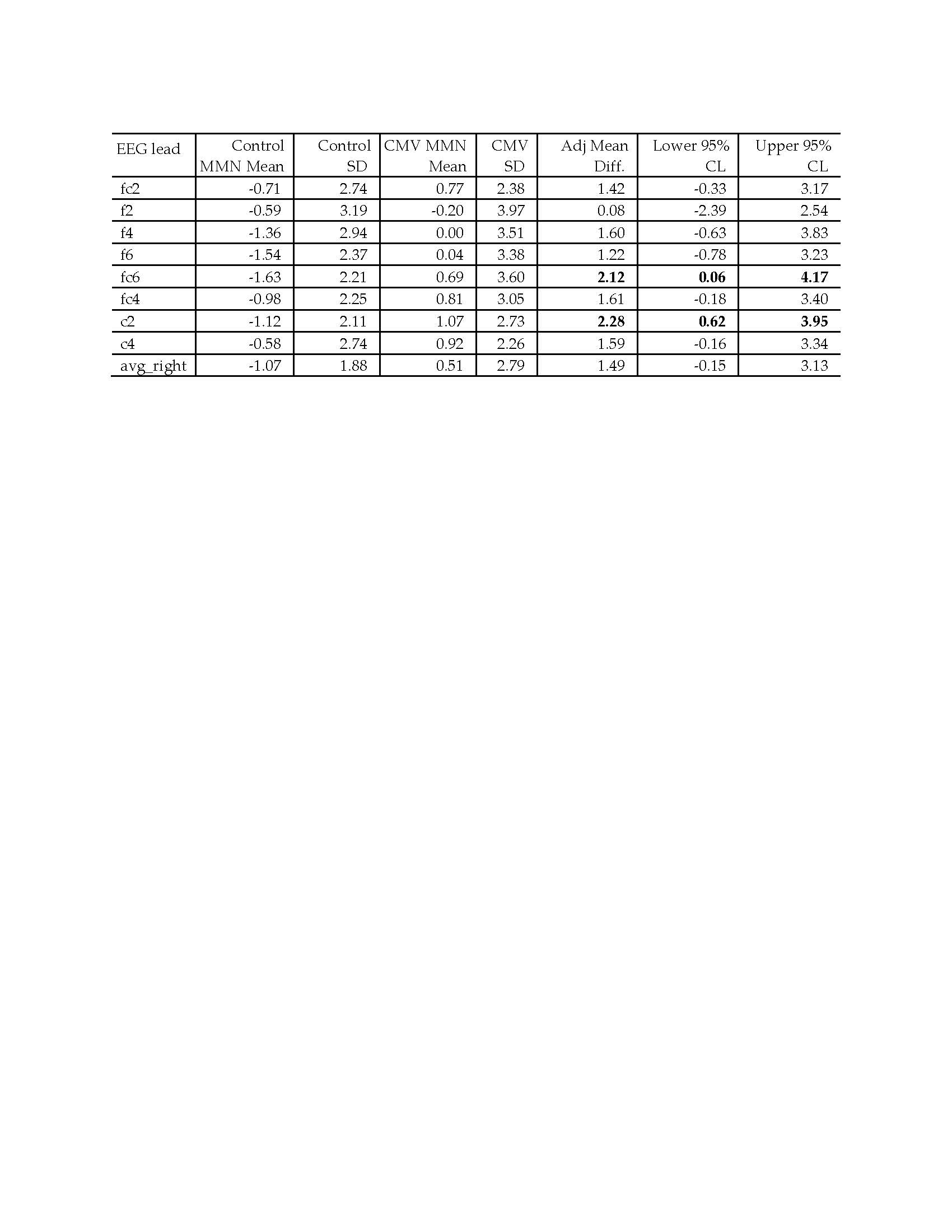Neonatology
Session: Neonatal Neurology 7: Neurodevelopment
610 - Infants with Asymptomatic Congenital CMV Have Subtle Differences in Neural Processing at 12 months
Saturday, May 4, 2024
3:30 PM - 6:00 PM ET
Poster Number: 610
Publication Number: 610.1266
Publication Number: 610.1266

Katie Pfister, MD (she/her/hers)
Assistant Professor
University of Minnesota
Minnetonka, Minnesota, United States
Presenting Author(s)
Background: Congenital cytomegalovirus (cCMV) is the most common congenital viral infection in the United States. Though much is known about long-term sequelae in those symptomatic at birth, 85-90% of infants with cCMV are asymptomatic at birth and outcomes are less defined. As more states screen for cCMV through newborn screening, information about long-term asymptomatic or mildly symptomatic cCMV (aCMV) is needed for parental counseling and care plans. Brain processing and memory can be evaluated using event-related potentials (ERPs), which are tiny segments EEG elicited in response to auditory or visual stimuli representing the neural processing of these stimuli. ERPs using oddball tasks demonstrate the brain’s automatic detection of change from a standard repetitive stimulus; they do not require active participation by the subject.
Objective: The aim of this study was to evaluate neural processing using ERP in infants with aCMV.
Design/Methods: Infants with aCMV were recruited through a universal newborn screening program in MN for longitudinal neurodevelopmental evaluation. Healthy controls were recruited from a separate registry of infants whose families indicated interest in research participation. All were >36 weeks at birth. ERP testing was done at 12 months old using an auditory oddball task where a standard tone (400Hz) and a deviant tone (1000Hz) were presented a total of 300 times (randomly presented, 80% standard, 20% deviant). ERPs were processed and evaluated for the mismatched negativity component (MMN; difference in mean EEG amplitude between deviant and standard tones, ie detection of change) in frontocentral leads. Multiple linear regression was done (covariates: age at visit and birth gestational age [BGA]) to assess differences between infants with aCMV and healthy controls.
Results: Analysis included n=22 aCMV and n=24 controls. BGA and age at visit differed between groups: 38.6 (+/-1.3) weeks and 13.6 (+/-1.8) months, respectively, for aCMV, and 39.7 (+/-1.3) weeks and 12.2 (+/-2.1) months, respectively, for controls. Left-sided MMNs were similar between groups. Right-sided MMNs were generally larger for the aCMV group and some leads at the frontocentral border reached significance: mean group amplitude difference at lead FC6 was 2.12µV (95% CI 0.06-4.17) and at C2 2.28µV (0.62-3.95).
Conclusion(s): Infants with aCMV show automatic detection of changes in auditory stimuli with subtle differences compared to controls at 12 months old. These changes that may reflect alterations in brain connectivity and scaffolding that could affect more complex brain processes later in life.


